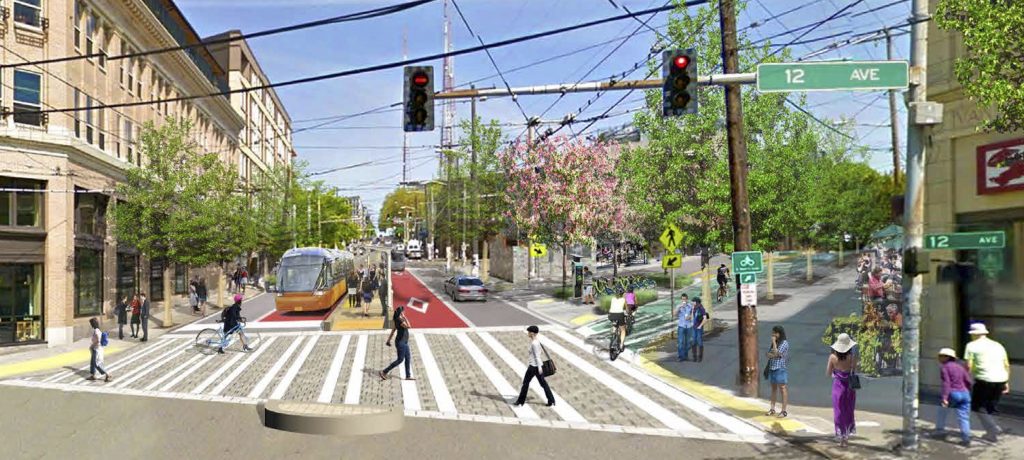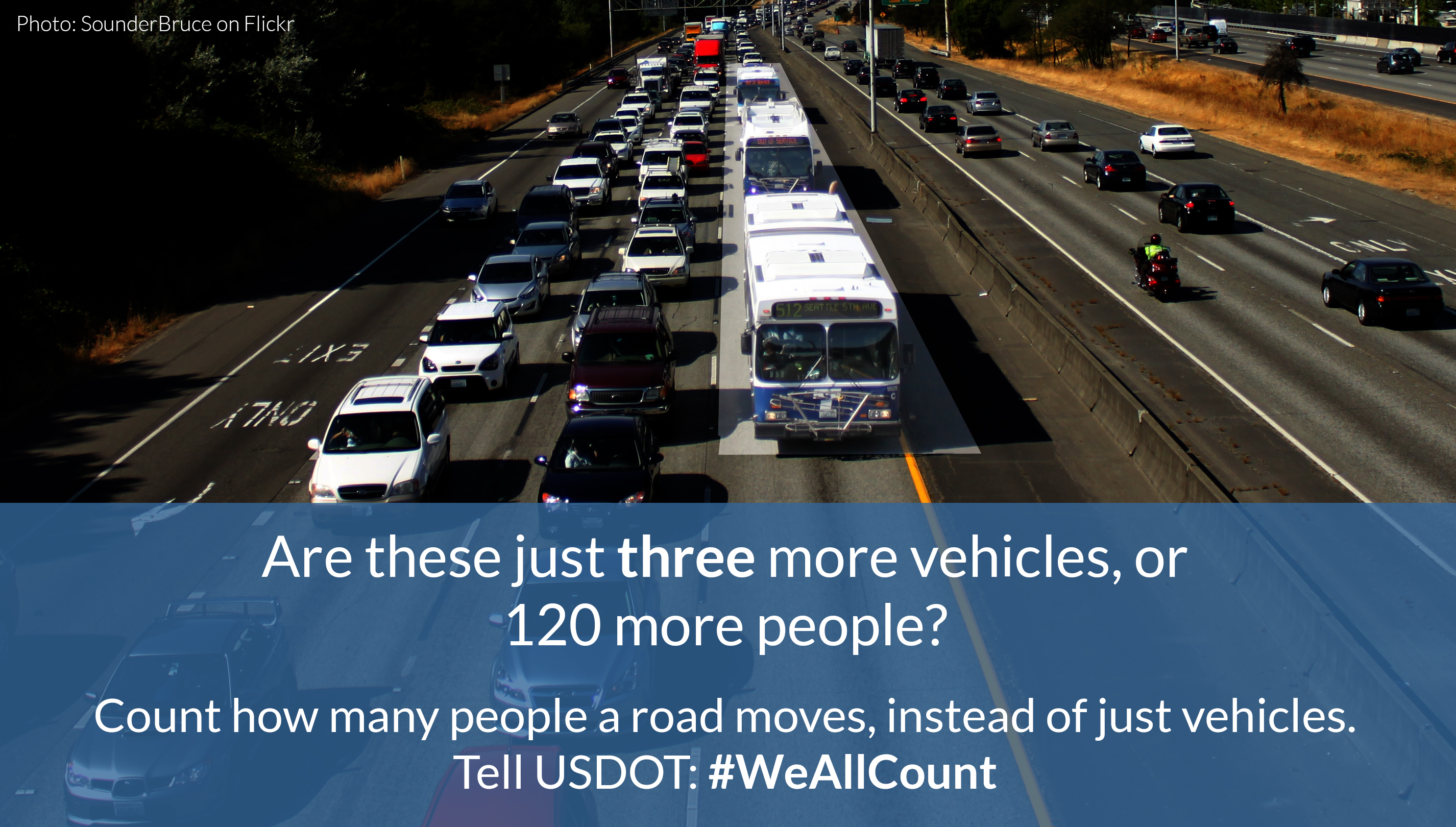
USDOT is trying to eliminate a new requirement to track carbon emissions from transportation

USDOT is attempting to rescind a federal requirement for states and metro areas to measure their carbon emissions as part of a larger system of accountability for federal transportation spending.

This is from last year’s campaign about the measure for congestion, but the principle holds here: If buses are prioritized because of emissions targets, for example, a road can move more people more efficiently and with fewer emissions.
Update: The comment period has closed and we submitted a large batch of letters to USDOT. Check the blog for updates.
The 2012 transportation law (MAP-21) required transportation agencies to begin using a new system of performance measures to govern how federal dollars are spent and hold them accountable for making progress on important goals, like congestion, traffic fatalities, reliability, road/bridge condition, mode share and carbon emissions. For two years, USDOT worked to establish this new system, soliciting reams of public feedback, and finalizing the measures in January of this year.
Climate impacts aside, tracking carbon emissions is one of the best ways to judge how efficiently we’re moving people and goods. More on that in a minute.
The Trump Administration is attempting to repeal this carbon emissions measure. Take action and provide an official comment to USDOT in support of keeping it intact. (Official notice here)
You may have been one of the thousands of folks who joined our coalition to successfully push USDOT to revise their measure for congestion and put value on providing transit, shared rides and safe walking or biking — rather than just incentivizing the construction of more expensive road capacity in every case in a vain attempt to “solve” congestion. During that process, we also succeeded in pushing USDOT to consider and include a carbon emissions measure to track the percent change in CO2 emissions generated by on-road mobile sources on most of our bigger roadways.
After first attempting to rescind the rule directly by fiat, USDOT was sued by environmental groups, and rightly so — once federal rules are implemented, they can only be undone by Congress or by a new rulemaking process that allows public feedback. So USDOT backed down and is going through the official channels, which means opening up a new comment period where interested groups and citizens can weigh in and urge them to preserve this CO2 rule as part of the new performance measure system.
But we’ll have to act fast — we need to have your letters by Monday, November 6, at noon, so we can deliver them before the deadline.
Measuring carbon emissions is a good yardstick for how efficiently a state or metro area is moving people and goods. Emissions will almost certainly go up if you’re only building new highways and not providing a wide range of transportation options in a congested corridor or region. Agencies should be encouraged — or at least rewarded — for finding ways to invest their transportation dollars so that trips can be taken on transit, on foot or by bike, or coordinated with land use so that trips can be shorter altogether. Measuring carbon emissions doesn’t give you the entire picture, but it is another valuable piece of the puzzle for evaluating the effectiveness of the spending decisions made by states and metro areas.
If USDOT manages to dump this measure, we will lose an important metric for determining who is using their funding to most efficiently connect people with destinations and move goods to market. Shouldn’t states and cities be aiming to move people more efficiently, emitting less carbon per trip? Or, if they decide that less efficiency is the way to go, shouldn’t taxpayers at least have a mechanism for tracking that and holding them accountable?
This administration is attempting to let transportation agencies make decisions while hiding the emission impacts from the public, removing a valuable metric for assessing how they’re spending your dollars. Let them know that we, the people who are paying for the transportation system, deserve to know what we are getting.
Comments are due by the end of the day on November 6. Click here to sign a letter that we’ll produce and deliver on your behalf.
—
For those of you who prefer to submit comments on your own, you can do so through the official rulemaking on Regulations.gov here and you can grab the letter text from our page here to paste in.



